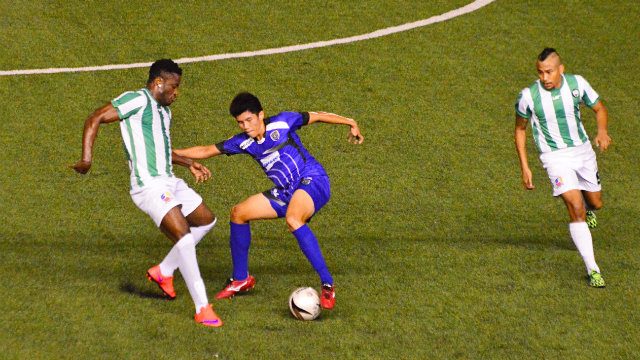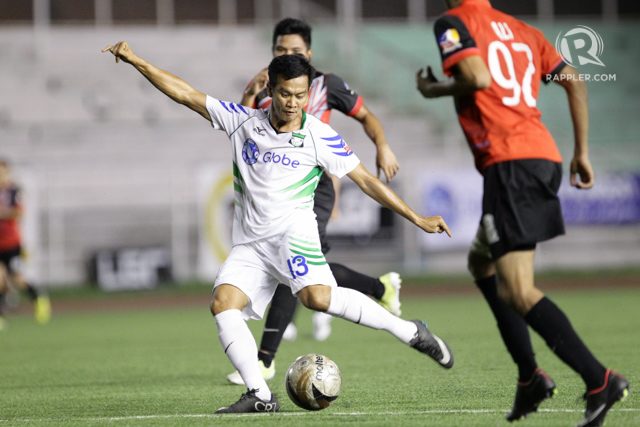SUMMARY
This is AI generated summarization, which may have errors. For context, always refer to the full article.

MANILA, Philippines – The United Football League has put its league on hold for a few weeks to focus on the UFL Cup. If that sounds confusing to you, then read on.
In the world of club football, each country typically has a league competition that is double round-robin with no playoffs, with the team collecting the most points lifting the trophy. And then there is also a separate “cup” competition that is single knockout.
In most footballing countries the two competitions are played concurrently, with league games on weekends and then on some weeks cup games on Tuesdays and Wednesdays.
Why have two different competitions at all? Well, both have different characters. Mick Denison, the former Nomads coach, says it well.
“The league rewards the best team over a season. The cup rewards the best team on the day.”
The biggest, wealthiest, most consistent teams usually win league competitions. Only they have the resources to pile up the points consistently over a long period of time.
Single-knockout cups, on the other hand, are sprinkled with fairy dust. It’s where dreams come true for the less-heralded teams. It’s NCAA March Madness with cleats. The consensus best team in the nation might have a bad day and exit the tournament. Leagues require teams to be consistent. Cups ask for teams to be, well, perfect, or perfectly lucky.
Having a cup is in some sense a way of giving less-dominant teams a chance at a trophy. It’s spreading the joy of football around just a bit.
Of course, many cup finals are contested between two strong, powerful teams, but often times lesser squads have their moments in the sun.
One of my earliest memories of a cup final was when I was living in Singapore in the 1980s and mighty Liverpool, the league champs, squared off with unfancied Wimbledon in the 1988 English FA Cup final in Wembley.
Dave Beasant, Wimbledon’s goalie, saved a Ronnie Aldridge penalty that day and Lawrie Sanchez’s 37th minute goal proved the only score of the match as Liverpool were denied a league and cup double. The victory surely meant the world for Wimbledon.
The UFL Cup follows a different format. There is a round-robin group stage and then a knockout bracket. In previously years the Cup has been held after the league, in the same way the PBA does its different conferences one after the other.
But this year the cup group stage is all done during a league interregnum, and then the knockout matches follow as the league restarts. Football.com.ph lists July 22 as the date for the final.
The history of the UFL cup is a storied one, with upsets and deep cup runs by lower-ranked clubs.
The first UFL game I ever watched was the 2010-2011 Cup final between Air Force and Global in University of Makati, with the airmen negating a 2-0 Global lead to square the game at 2-2. I think Ian Araneta scored both goals. But with just minutes to go, an Izzo Elhabbib header gave Global a 3-2 victory.
The next Cup final was in December of the same year. Loyola Meralco Sparks, led by the Younghusbands, seemed to be favored against Air Force but the veteran military side completed their league and cup double with a 2-0 win thanks to goals by Araneta and Yanti Barsales. It was the last dying breath of military dominance in local club football.
Air Force was in the picture once again two years later when they reached the semifinals despite being relegated from the UFL’s first division in the league.

The highlight of the PAF campaign was the stunning 1-0 knockout win over Kaya in extra time thanks to a winner by Jimmy Vergara. Air Force was not only missing four starters because of suspension, but they also were tired from packing Yolanda relief goods the day and night before. They somehow gutted out the victory and then beat Union to reach the final four, where they lost in extra time to Pachanga. Jez Tonog, aged 43, scored in injury time in that match.
Pachanga played the role of Cinderella team, reaching the 2013 final against Loyola. Despite Ariel Zerrudo’s two goals, the Sparks exorcised the ghosts of their 2011 final loss with a 3-2 win in Emperador Stadium.
Last year there was no unfashionable side in the final which was contested by Ceres and Global, with the Bacolod-based team winning 2-1. My biggest memory of that game wasn’t either Ceres goal but keeper Louie Casas smothering a late Edgar Briones attempt to preserve the win.
This year’s cup could offer similar fireworks, with twenty teams split up into four groups. The top two from each group reach the quarters. There are minnows, like non-league Bright Star, UST from the UAAP, Fleet Marine (née Navy), and Nomads. Fleet Marine very nearly pulled off the shock of the competition when they lost to first division Team Socceroo 2-1 recently despite a lack of practice sessions.
Of course the top sides like Ceres, Global, Kaya, and Loyola will be aiming to add to their collection of silverware. All but Loyola are unbeaten after three group games. But mid-table sides like Pachanga and Green Archers, or even a good second division side like Laos, Forza, or JP Voltes could catch a gear and entertain thoughts of grabbing the title.
Cup competitions offer that slice of luck that adds a dash of unpredictability. It’s what could insert some real magic to this year’s UFL Cup.
Check the schedules and standings for the UFL Cup on www.football.com.ph.
– Rappler.com
Add a comment
How does this make you feel?
There are no comments yet. Add your comment to start the conversation.